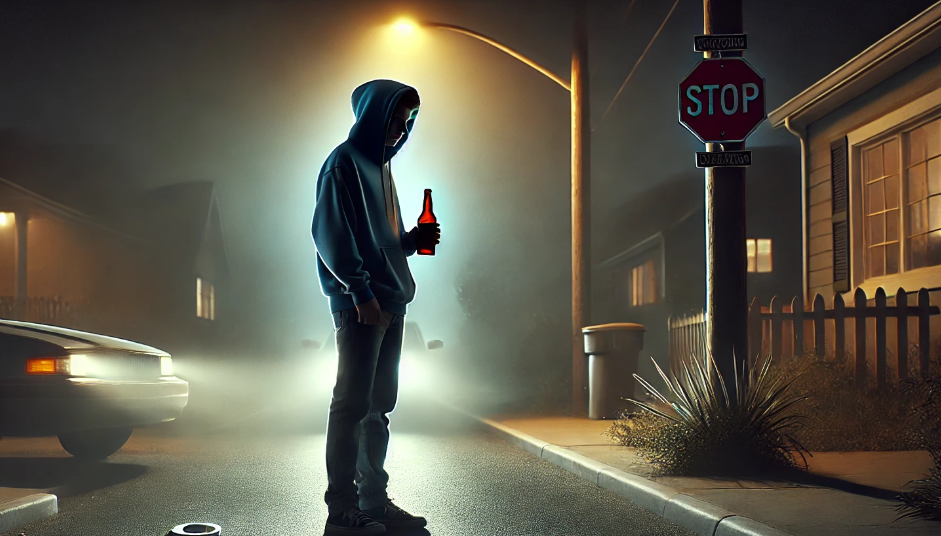High in Plain Sight or You Can’t Stop What You Don’t Know!
Seeing the Signs Hidden in Plain Sight: Today’s teens have a whole world of drug and alcohol trends that may be invisible to unsuspecting parents. “High in Plain Sight” refers to the fact that many warning signs of youth substance use are right before our eyes – in teen slang, logos on clothing, or ordinary objects secretly repurposed as drug paraphernalia. For example, a t-shirt or sticker might sport a seemingly innocent symbol that’s actually a reference to marijuana or another drug. Kids often use code words, emojis, or trendy brand logos to signal drug culture. As Officer Jermaine Galloway (the “Tall Cop”) famously says, “If there is a logo, term, picture, song, or clothing item – a possible stash compartment or new drug product – right in front of you and you don’t realize its relevance to drug or alcohol culture, how can you prevent or stop it?”nearnorthnow.com In other words, you can’t intervene if you don’t even know what to look for. Parents who educate themselves on these hidden signs are better equipped to protect their kids.

Hidden Stash and Sneaky Products: One surprising insight from this session is just how clever teens (and companies catering to them) can be in hiding substances. There are everyday items designed to conceal drugs – like soda cans or hairbrushes with secret compartments, or backpacks and hoodies with hidden pockets. Current trends include “stash clothing” (apparel with secret pockets) and stealthy devices that look like USB drives or pens but are actually vapes. Convenience stores may even carry novelty products that teens misuse, such as certain over-the-counter medicines or gas station “supplements.” According to experts, youth are using everyday objects to hide drugs in plain sight, from hollowed-out books to fake personal care productsyouthzone.com. Parents should be aware of unusual items that seem out of place (like a can of soda that’s always in a teen’s room but never gets thrown away) or packaging from products you’ve never seen them use. These could be red flags of concealment.
Logos and Slang – Decoding the Teen Drug Culture: Modern drug culture has its own language and symbols. A parent might see a 420 sticker (popular code for cannabis) or brand logos like a certain candy name or cartoon that have double meanings in drug slang. The “High in Plain Sight” training emphasizes educating parents on identifying these cuesyouthzone.com. For instance, a teenager wearing socks with tiny cartoon mushrooms might not be a random fashion statement – it could be a reference to psychedelic mushrooms. Likewise, terms like “plug,” “juul,” or emoji sequences might be teens’ way of talking about dealers or vaping without adults catching on. It’s a lot to keep track of, but the key takeaway is not for parents to memorize every symbol – it’s to stay curious and engaged. If you see a logo or hear a phrase you don’t recognize, don’t dismiss it. Do a little research or calmly ask your teen what it means. Showing that you’re informed (or willing to learn) sends the message that you are paying attention.
Actionable Tips for Parents: Knowledge truly is power here. Start by doing a sweep of your home environment: check your child’s room for any strange containers (soda cans with false tops, weirdly heavy shampoo bottles, etc.) and be aware of any strong smells (like the sweet scents of vaping liquids or incense used to mask drug odors). It’s wise to monitor online purchases arriving at your house as well – many of these sneaky products can be bought cheaply online. If you come across something concerning, approach it as a conversation, not an accusation. For example, “I found this hollow can in your drawer – I’m worried about why it’s there. Let’s talk about it.” Stay calm and factual. The goal is to keep communication open so your teen is less likely to hide things.
Stay One Step Ahead: Importantly, parents should regularly update themselves on emerging trends. Drug culture shifts quickly – what was popular six months ago might be out of favor now. Consider attending local parent workshops, following reputable prevention experts on social media, or subscribing to newsletters on youth substance use. Officer Galloway’s trainings, for instance, frequently share newly identified slang, paraphernalia, and concealment gadgetsyouthzone.com. By staying informed, you not only improve your chances of catching warning signs – you also send a clear signal to your teen that you’re involved and you care. Many parents from the “High in Plain Sight” session reported that once they learned about these hidden-in-plain-sight clues, they felt much more confident interveningyouthzone.comyouthzone.com. You don’t need to become a detective going through all your child’s things; rather, show interest in their world. Ask about that new sticker on their water bottle or the meaning of a meme they shared. Even if the answer is innocent, your teen learns that you are paying attention. In short, being knowledgeable about youth drug trends and paraphernalia is an empowering prevention strategy. You can’t stop what you don’t know – so commit to knowing. Your awareness, combined with open eyes and open communication, is one of the best defenses to keep your child safenearnorthnow.com.


Comments
Post a Comment